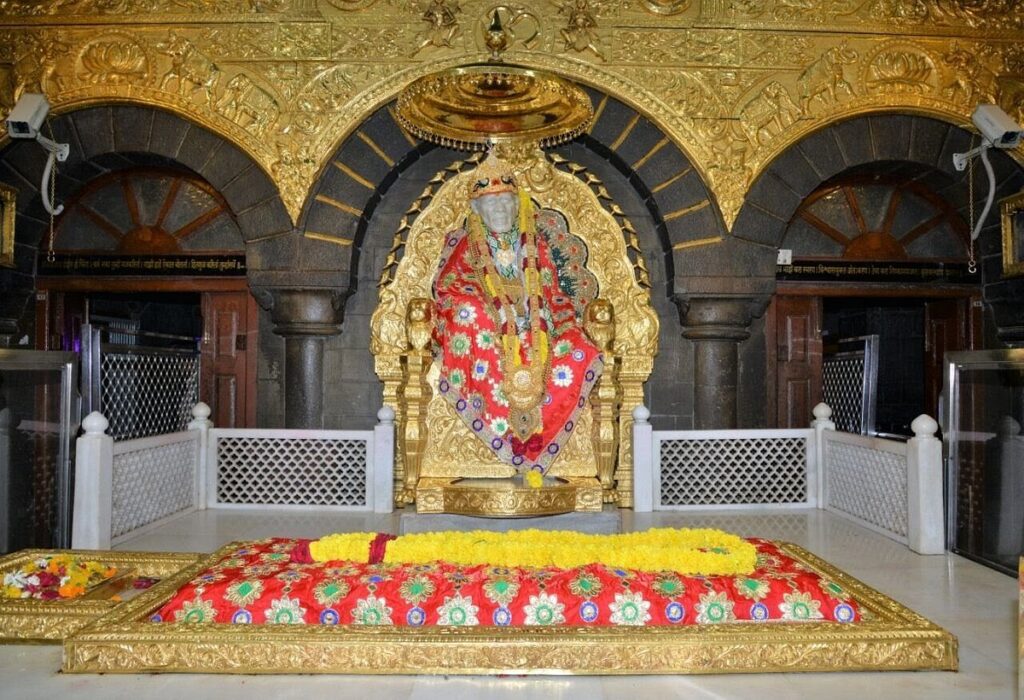
Shirdi Sai Baba
Explore the sacred Shirdi Wale Sai Baba Temple, a pilgrimage destination offering peace, blessings, and spiritual awakening. Learn about its history, significance, and teachings.
Introduction of Shirdi Sai Baba
The Shirdi Wale Sai Baba Temple is one of the most revered pilgrimage sites in India, drawing millions of devotees each year. Nestled in the quaint town of Shirdi in Maharashtra, in the western region of India, this temple is dedicated to Sai Baba, a spiritual figure who is venerated as a saint, guru, and divine incarnation. Known for his universal teachings of love, compassion, and faith, Sai Baba continues to inspire people from all walks of life. This blog delves into the history, architecture, spiritual experience, and profound significance of the Shirdi Sai Baba Temple.
1. The Legend of Shirdi Sai Baba
Sai Baba of Shirdi, affectionately known as Shirdi Wale Sai Baba, is a revered figure whose life is shrouded in mystique and miracles. Though his origins remain unclear, Sai Baba arrived in Shirdi as a young man and spent his life spreading messages of love, faith, and unity. His teachings transcended religious boundaries, blending elements of Hinduism and Islam, and his life was dedicated to serving humanity.
Sai Baba’s miracles, such as healing the sick, multiplying food, and calming storms, cemented his divine status among followers. His famous teachings, “Shraddha” (faith) and “Saburi” (patience), emphasize unwavering belief in God and enduring life’s trials with grace.
2. The History of the Shirdi Sai Baba Temple

The Shirdi Sai Baba Temple’s origins date back to 1922, four years after Sai Baba’s passing in 1918. It was built around the Samadhi Mandir, the final resting place of Sai Baba. This sacred spot quickly became a pilgrimage destination for devotees.
Initially a small shrine, the temple complex expanded over the decades to accommodate the growing number of visitors. Today, it is managed by the Shri Saibaba Sansthan Trust, which oversees its operations, including darshan arrangements, charity initiatives, and infrastructure development.
3. Architectural Marvels of the Temple
The Shirdi Sai Baba Temple’s architecture reflects simplicity and sanctity. The main structure houses a marble idol of Sai Baba seated in a meditative posture, radiating serenity and grace. The idol is adorned with colorful garlands and exquisite fabrics, adding to its divine aura.
Key Highlights of the Temple:
- Samadhi Mandir: This is the most sacred area, where Sai Baba’s mortal remains rest. The Mandir features intricate carvings and a serene ambiance.
- Dwarkamai: A humble mosque where Sai Baba lived for much of his life. It houses sacred items used by Sai Baba, including his grinding stone and cooking vessels.
- Chavadi: A small building where Sai Baba spent alternate nights. Devotees often visit it to feel closer to Sai Baba’s daily routine.
- Gurusthan: The spot under a neem tree where Sai Baba first appeared in Shirdi. It’s a place of meditation and reflection.
The Use of Gold in the Temple:
The Shirdi Sai Baba Temple is also known for its opulent use of gold, donated by devotees as an expression of their faith and gratitude. The sanctum sanctorum and the idol of Sai Baba are adorned with gold ornaments, including a gold throne, a golden umbrella, and intricately designed gold garlands. The temple’s walls and other structures are also embellished with gold, adding to the grandeur and divine atmosphere of the space. This extensive use of gold symbolizes the devotion and generosity of Sai Baba’s followers.
4. The Spiritual Experience at the Temple
Visiting the Shirdi Sai Baba Temple is a deeply moving experience. The temple exudes an atmosphere of peace and spirituality, making it a haven for those seeking solace and blessings.
Activities and Rituals:
- Darshan: Devotees queue up to catch a glimpse of Sai Baba’s idol. The sight of the beautifully decorated idol is believed to bring divine blessings.
- Aarti: The temple conducts four daily aartis—Kakad Aarti, Madhyan Aarti, Dhoop Aarti, and Shej Aarti. These are soul-stirring devotional songs that attract thousands of devotees.
- Prasad Distribution: The temple offers prasad, including sweets and food, which devotees consider sacred.
The energy of the chanting, prayers, and collective devotion creates an uplifting and transformative experience.
5. Teachings of Sai Baba
Sai Baba’s teachings emphasize universal love, faith, and selfless service. His messages continue to guide millions of devotees worldwide.
Key Teachings:
- Shraddha and Saburi: Faith and patience are the cornerstones of a fulfilling spiritual journey.
- Unity of Religions: Sai Baba urged his followers to look beyond religious divisions and focus on the essence of spirituality.
- Charity and Service: He encouraged helping the needy as a way of serving God.
- Inner Purity: Sai Baba emphasized the importance of inner purity over outward rituals.
6. How to Plan Your Visit
Getting to Shirdi:
- By Air: The nearest airport is Shirdi International Airport, located 14 km from the temple.
- By Train: Kopergaon Railway Station is about 15 km away, and trains connect Shirdi to major cities.
- By Road: Shirdi is well-connected by buses and private vehicles from cities like Mumbai, Pune, and Nashik.
Best Time to Visit:
The temple is open year-round, but the best time to visit is between October and March, when the weather is pleasant. Festivals like Ram Navami, Guru Purnima, and Vijayadashami are especially vibrant, though they attract larger crowds.
7. Accommodation and Amenities
Shirdi offers a range of accommodation options to suit all budgets. The Shri Saibaba Sansthan Trust manages several guesthouses that provide clean and affordable lodging. Many private hotels and resorts are also available for those seeking more luxurious stays.
The temple complex includes facilities such as cloakrooms, parking, and free drinking water. Devotees can also enjoy meals at the trust’s prasadalaya, which serves thousands of people daily.
8. Charitable Initiatives by the Temple Trust
The Shri Saibaba Sansthan Trust actively engages in charitable activities, continuing Sai Baba’s legacy of selfless service. Key initiatives include:
- Free Medical Services: The trust operates hospitals and clinics offering free or subsidized treatment.
- Education: Schools and colleges provide quality education to underprivileged children.
- Community Meals: The prasadalaya serves free or affordable meals to devotees and the needy.
9. Conclusion (Shirdi Sai Baba)
The Shirdi Wale Sai Baba Temple is not just a place of worship; it is a beacon of hope, love, and spiritual enlightenment. Its rich history, serene ambiance, and profound teachings make it a must-visit destination for anyone seeking peace and divine blessings. A journey to Shirdi is an opportunity to reconnect with your inner self and embrace the universal values of love, faith, and service.
Whether you are a staunch devotee or a curious traveler, the Shirdi Sai Baba Temple promises an unforgettable spiritual experience that will leave you inspired and transformed.
FAQs
Q1: What are the temple’s opening hours? The temple is open daily from 4:00 AM to 11:30 PM, with specific timings for aarti and darshan.
Q2: Are there any special events at the temple? Yes, festivals like Guru Purnima, Ram Navami, and Vijayadashami are celebrated with great fervor.
Q3: Can I book darshan tickets online? Yes, the Shri Saibaba Sansthan Trust offers online booking for darshan and aarti through its official website.
Q4: Is photography allowed inside the temple? Photography is prohibited inside the main temple premises to maintain sanctity.
Q5: Are there any guidelines for visiting the temple? Devotees are advised to dress modestly and follow the temple’s rules for a smooth and respectful visit.
Source: Shirdi Sai Baba
Indian Temple: Shirdi Sai Baba

